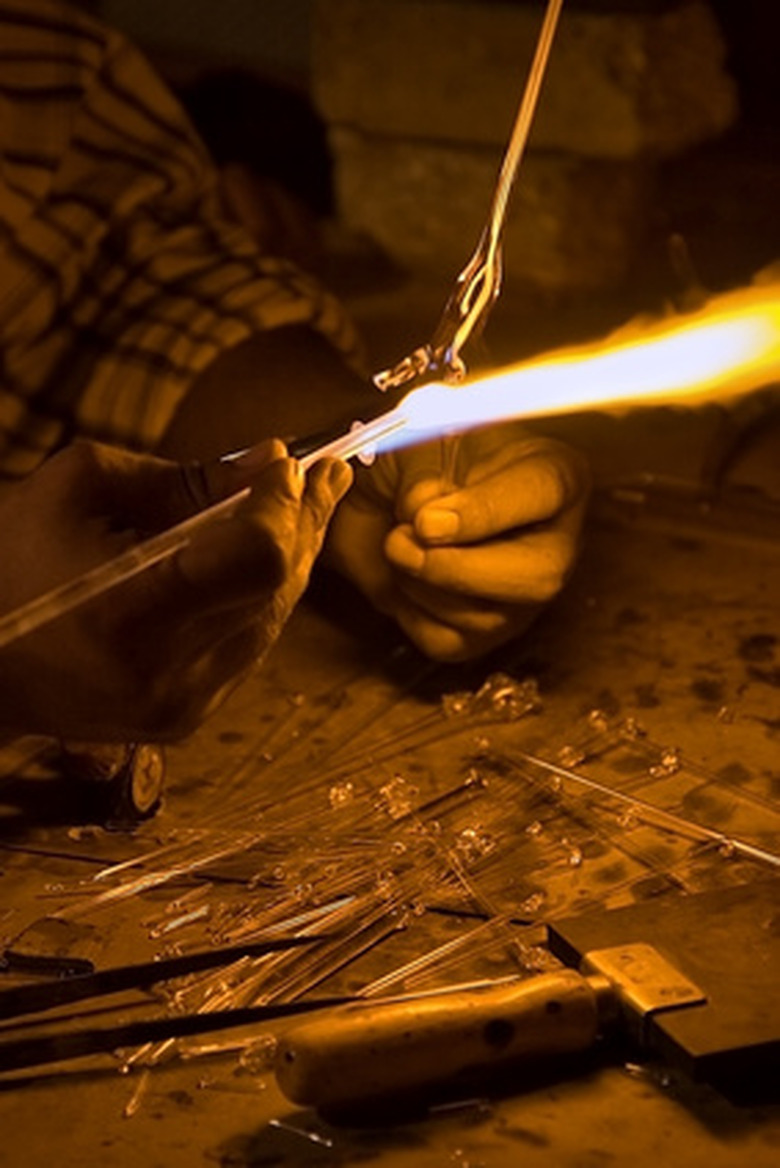How To Make A Hydrogen Torch
Hydrogen water torches are similar to blow torches, but they work at much higher temperatures. One of the major advantages of using a hydrogen torch vs. a traditional blow torch is that there is no soot byproduct. Instead, the hydrogen torch produces just water while working at temperatures that can weld refractory metals a normal torch can't. Best of all, this incredibly powerful torch costs much less than a traditional torch. You can even make one yourself using materials available to the average consumer.
Step 1
Open a 6 volt lantern battery and take out the carbon rods. Clean the carbon rods with fine grade sandpaper.
Step 2
Wrap a piece of wire around each of the carbon rods, and attach the other end of each wire to a contact on a 9 volt battery.
Step 3
Fill a glass container with two cups of water and a teaspoon of salt. Insert the carbon rods, with the wires hanging out and the 9 volt battery resting outside the container. Bubbles will start to form in the water.
Step 4
Put an 18-inch neoprene tube at the top of the glass container just above the water line, and seal the opening of the container around the tube with plastic wrap.
Step 5
Fill the end of your neoprene tube with steel wool packed as tightly as possible, and then insert a basketball pump needle into the tube.
Things Needed
- 6 volt battery
- Fine grade sandpaper
- Wire
- 9 volt battery
- Glass container
- 2 cups water
- 1 tsp salt
- 18-inch neoprene tube (IV tubing, available at medical supply stores)
- Plastic wrap
- Steel wool
- Basketball pump needle (available at sporting good stores)
TL;DR (Too Long; Didn't Read)
When you are ready to use your hydrogen torch, light the end of the basketball pump needle with a match.
Warning
Wear safety goggles when using your hydrogen torch.
Cite This Article
MLA
Grace, Elizabeth. "How To Make A Hydrogen Torch" sciencing.com, https://www.sciencing.com/make-hydrogen-torch-6456097/. 24 April 2017.
APA
Grace, Elizabeth. (2017, April 24). How To Make A Hydrogen Torch. sciencing.com. Retrieved from https://www.sciencing.com/make-hydrogen-torch-6456097/
Chicago
Grace, Elizabeth. How To Make A Hydrogen Torch last modified March 24, 2022. https://www.sciencing.com/make-hydrogen-torch-6456097/
